If you live in a neighborhood with a homeowners association (HOA), you probably know all too well how restrictive they can be in what’s allowed—or more frustratingly—not allowed. What’s required for a front yard garden can be restrictive, but this list of vegetables that are pretty as well as tasty is just what you need to embrace edible landscaping and install a front yard vegetable garden.
Be sure to expand on your edible landscaping prospects by planting some productive trees, too!

HOAs often don’t allow chickens. Or painting your home outside of a very narrow color spectrum. Or planting a vegetable garden in the front yard. Hold the phone. How ridiculous is this?
Instead of growing food, they insist that you maintain a certain amount of lawn, requiring regular mowing and intensive fertilizing to achieve that lush green swath and a sense of conformity. But hey — what if you could put in edible front yard landscaping with nobody the wiser? How’s that for some front yard curb appeal?
Growing a Front Yard Vegetable Garden
If you’re facing micro-management via your HOA but would really like to grow some of your own food, take heart. You can maintain that requirement of 70% lawn in the front yard and still harvest some veggies mixed into your flower border with edible landscaping.
The trick is to create a beautiful, lush front yard border that—unbeknownst to the “board”—is actually feeding your family.
Grow Some Greens!
Ready to grow fresh greens, no matter WHERE you live? Sign up for my
FREE quick-start guide and start growing some of your own food!
The trick is to combine nice looking crops with flowers and shrubs, mixing the vegetables in with more “acceptable” landscape plants.
Do that and you’ll have a secret kitchen garden right outside the front door!
Growing in Raised Beds
A raised bed in the front yard can be a little more obvious if you set up a standard square box. But there are ways to create a raised garden without alerting the HOA to your plans.
Creating raised beds as part of the hardscape, as you see above, allows you to have the benefits of raised beds — easy access, fewer weeds, control over the soil — with the beauty of a well-designed garden landscape.
Of course, a project like this can get expensive quickly. But if you’re in your forever home and need to use the front yard for growing food, the investment may be worth it.
Creating a Border
The image above is from my place. I’ve used rocks from on site to create garden beds that are home to both edible crops and ornamentals. While these beds are raised off the ground by about 6″ or so, the rock border is more ornamental than functional.
Front yard vegetable gardens are, of course, less permanent than a landscape installation of perennials and shrubs. You’ll have gaps to fill each season, as your veggie crops complete their life cycle.
Creating a plan for a front yard veggie garden allows you to grow more food in the space you have.
The Best Plants for a Front Yard Vegetable Garden
Growing vegetables in visible spaces like the front yard requires choosing crops that are nice looking. You’ll want to choose plants that are tidy through the growing season. These vegetables and fruits are so pretty, nobody will know the difference.
Celery
Growing celery in the home garden provides crunchy snacks and flavor for homemade soups and stews. It will provide a harvest – both leaves and stems – for an entire season, making it a worthwhile addition to your front yard garden plans.
It grows upright, with bright green, leaf-topped stalks about 18” tall. Celery is a biennial that is grown as an annual in most home gardens.
 Eggplant
Eggplant
If you’ve not ever grown eggplant, you’re in for some fun. The fruit is so beautiful and can come in dark purple—almost black— or light purple; striped or solid. The handsome plant itself has grey-green leaves and stands one to two feet high or taller.
- Growing eggplant
- Try it over pasta
- Preserve it by making zacusca (if only because it’s fun to say!) — note that you’ll probably want to process this one in a pressure canner. It sounds wonderful, but I can hear the canning wonks out there screaming “unsafe procedures!”
- Make babaganoush
Peppers
Whether you like ’em hot or sweet, peppers grow on a sturdy plant that stays nice and green all summer long. The peppers themselves can range from green to yellow to red — there’s even a purple bell pepper — and from small to large, adding a pop of unexpected color to your edible landscaping. Most pepper plants grow to about 12-15″ high.
- Growing hot peppers
- Make some smoky hot pepper sauce
- Ferment banana peppers and make a sauce
- Make a hot pepper relish
Basil
A summer staple for a lot of gardeners, basil is prolific and pretty — it comes in both green and purple varieties. Tuck some into your flower garden. The leaves can be harvested all summer long for pesto or as an addition to salads and Italian dishes and nobody will be the wiser.
- More on growing and harvesting basil
- Propagate basil for free plants
- How to make pesto
- Drying basil
- 25 Must-try basil recipes
Artichokes
Unlike most summer vegetables, artichokes are a perennial. Use them as part of your edible landscaping plan and you’ll plant once and harvest veggies for years. The grey-green foliage grows about two feet high and produces many artichokes in a season.
- More on growing artichokes
- Not sure how to cook artichokes? This will help.
 Grow Swiss Chard right in the front yard
Grow Swiss Chard right in the front yard
While I don’t love Swiss chard on my dinner plate, my husband does. I do love it for the fact that one seed results in a plant that produces for months and this edible plant looks beautiful as part of an edible landscaping plan. It grows about 12″ high and relatively erect. One of the edibles that can easily be tucked into small bare spots in your front yard garden border, add this one to your must-grow list of vegetables for the front yard.
- More on growing Swiss chard
- Try it in enchiladas
- Cream it with bacon
 Summer Squash for a prolific front yard crop
Summer Squash for a prolific front yard crop
While prolific zucchini plants can tend to overwhelm a small space, a summer squash variety like Patty Pan grows on a more compact plant that makes a great background for annual blossoms like marigolds and petunias.
- Turn your abundance into hamburger relish
Rhubarb is amazing
Another perennial plant that just keeps on giving. The oversized leaves of a rhubarb plant add almost a tropical feel to the edible landscape. They’ll likely die down during your cold winter months, but come springtime an established plant will provide lots of rhubarb stems.
Rhubarb leaves are high in oxalic acid and can cause unpleasant side effects and in some cases, poisoning — don’t eat those! You can, however, use them as mulch in your front yard garden.
- More on growing rhubarb here
- Try this delicious rhubarb coffee cake
- Make a rhubarb crisp
Lettuce
If you have bare spots in your border, fill them with lettuce! Sprinkle a mix of lettuce seeds, keep them moist, and in no time those bare spots in your front yard garden will be filled with pretty, edible greens.
Add beets to your front yard garden
You’ll probably grow beets for the bulbous root, but while it’s busy growing underground it will make pretty (and edible) leaves in your flower bed.
- More on growing beets
- Make this delicious beet kraut with some of the harvest
Edible landscaping with asparagus
Another perennial vegetable that looks as good as it tastes, asparagus is a good choice for edible landscaping. You’ll need to prepare a really rich bed for this one, but once it’s established, plants will produce asparagus spears for several weeks each Spring. After harvest season, spears are left in place and develop a wispy, fern-like foliage.
- Growing asparagus
- Whip up an asparagus and pepper side dish
Lemongrass for the landscape
This sturdy perennial will fool most everyone into thinking it’s a landscape plant. It’s great for tea and it keeps mosquitos at bay.
 Okra
Okra
Related to hibiscus, okra grows into a taller shrub-like plant, good for the back of the border in a front yard garden. The pretty flowers are eye-catching but the edible okra that follows the flower won’t give anything away!
- More on growing okra here
- Be sure to try this delicious roasted okra
Pineapples for edible landscaping
Pineapple plants can take up to two years to produce a crop. Which means that if you plant one of these pretty plants in your garden as a focal point, it will be there through two seasons. Of course, pineapples thrive in very warm regions, but you can easily plant one in a patio container to enjoy its beauty and an eventual harvest.
- How to grow pineapples
- Make a pineapple salsa to enjoy fresh or fermented
- If you happen to grow several, preserve them in this pineapple jalapeno jam
Herbs
Oregano, thyme, and mint all make great ground covers when you’re working on an edible landscaping plan. If you need to cover some bare ground with a low-maintenance plant, these are the ones to consider. Some herbs — like mint — can be invasive, so choose your spot for them wisely, but once they’re established you’ll be all set for spicing up your favorite dishes or making freshly brewed tea.
Need more garden ideas? You can find all of my posts about gardening and growing food here.
Originally published June 2014; this post has been updated.




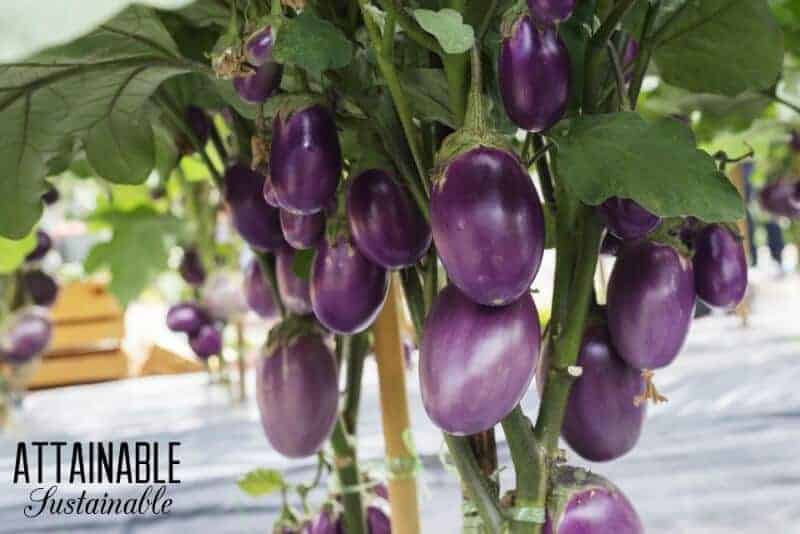 Eggplant
Eggplant
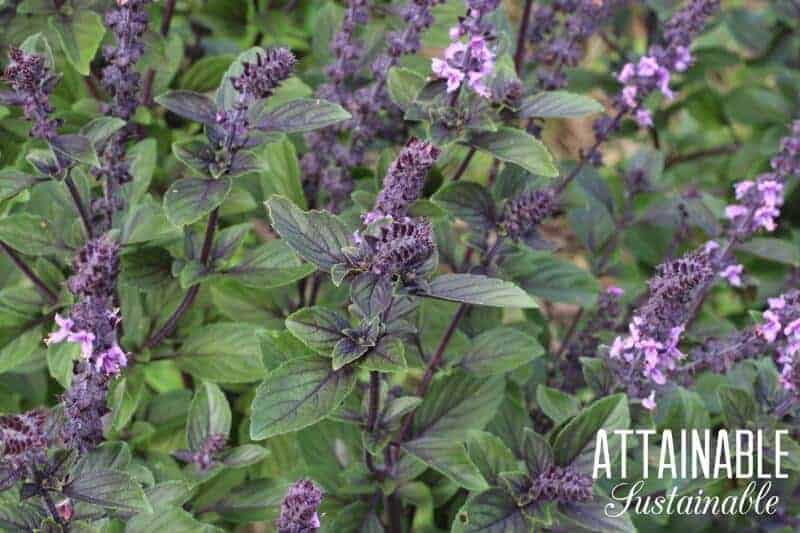


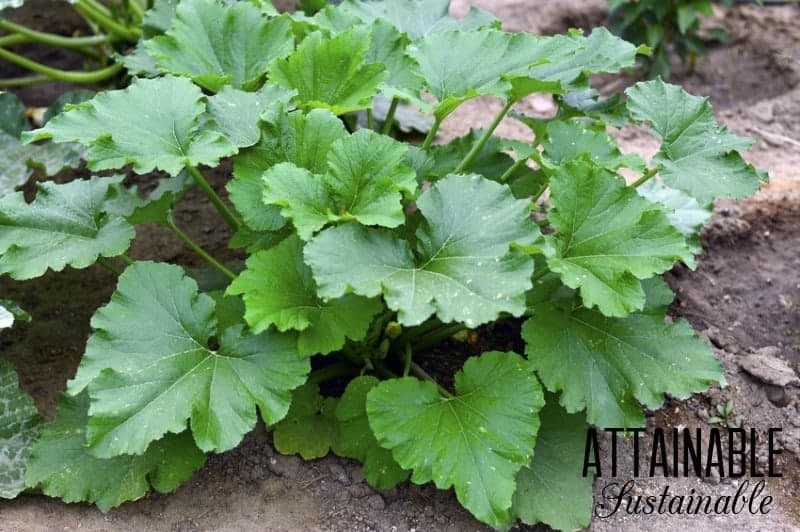 Summer Squash for a prolific front yard crop
Summer Squash for a prolific front yard crop


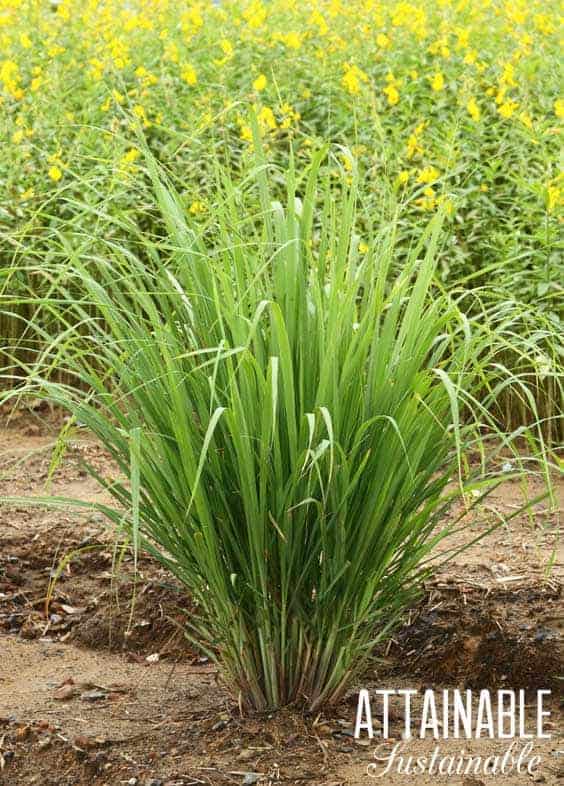
 Okra
Okra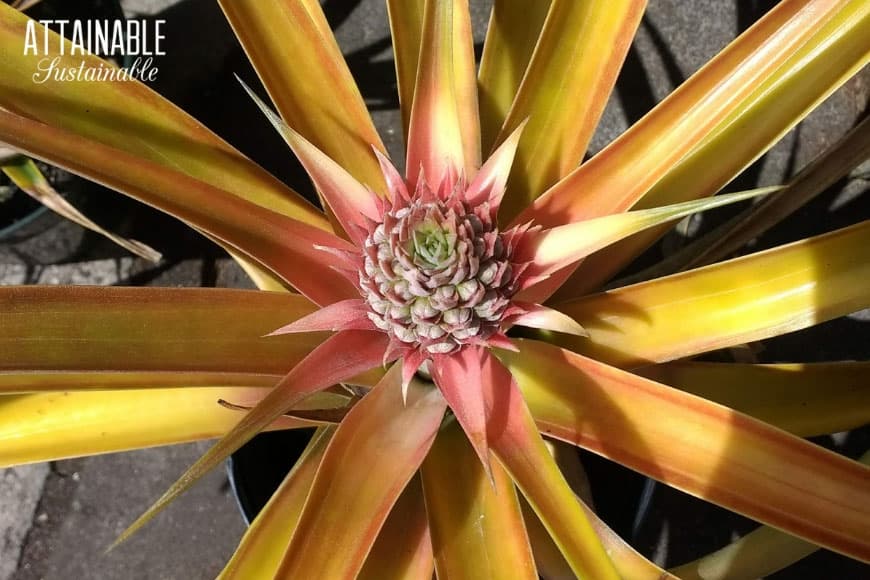







I’m so here for this, and shocker; I own an HOA management company!
Tip from a pro, in lost cases(unless you have a crazy board), as long as you keep your garden well maintained and not weed covered then I will not even notice it. When I do inspections I am looking for grass so long it’s gone to seed, weeds taking over beds to the point that I can’t see the mulch, and edging. I’d love to see more front yard herb and veg gardens! But every HOA has a different board and if you have a nutty one then my advice is to ask first.
Love this and am glad to hear it! Some HOA’s are definitely more picky than others.
HOA, for me, is just super annoying. Most of the restrictions they place don’t even make any sense; they live by rules that even they don’t know why they exist. Their methods are terrible, and I’m annoyed.
Should illegal. We didn’t need it before. Someone just found a way of making money
I don’t disagree. In any case, these are workaround ideas hopefully people can use.
These edible front yard landscaping ideas seem fun, and I will try a few of these ideas now. Then, hopefully, the homeowners association will fall for it, and they won’t know what I’m doing.
Yes, have fun with it and thanks for reading!
Daylillys are another good choice, along with blueberry bushes
Just wish these suggestions could tell me how to disguise a clothes line. We didn’t realize (didn’t think to ask) there was an HOA until after we signed the contract here. We’ve planted fruit trees and bushe, but they’ve died or been eaten by rabbits. We’re not physically or financially able to keep replacing things.
Do you have a deep covered patio? If so, get a retractable cloths line. Put it up to dry and retract it back when done. Also a nice bamboo roll up curtain to put down while drying will hide your clothes.
We have an indoor one that the poles come down the same way you lower a set of blinds, it is in the ceiling in my laundry room and fits a small to medium load of laundry. I actually liked it so much I bought a second one. It came from clotheslines.com.
My HOA does not insist on lawn as we are in AZ. They do have a list of plants and trees that are allowed, and yes, it is very narrow. If I planted anything but the lemongrass in the front, I would be fined. Lemongrass, they may not figure it out. If the HOA did not recognize it, I have a next door neighbor – a very unhappy couple- who would. I garden in the back yard instead. I still have problems with the next door neighbor. The husband HATES that I have gardens and fruit trees although I keep the trees short and away from our shared property line. BTW, their backyard consists of cement and a pool. and 2 cats who are outdoor cats most of the time and use my nice, organic yard as their litter box. Which makes it no longer organic in those areas. I advise people NOT to buy in an HOA if possible. Here, it is pretty much all that is available unless you have the money to buy and build outside of an HOA. Unfortunately, I cannot at this point in time. Sorry, just venting. Hate HOAs. They should be outlawed.
HOAs are certainly difficult to deal with if you’re a person who likes to do things differently! Yours is a cautionary tale for people who are considering a home in an HOA.
They could be breaking rules by letting their cats roam outside of their property. Even if there’s nothing in the HOA rules, many places have laws against it. In some places you are even allowed to trap the cats and give them to animal control. May be worth looking into when the neighbors are giving you a hard time about your garden while their cats are messing it up.
Homemade Animal repellant:
1 ounce human pee (scent marks your territory)
1 ounce castor oil (smell and taste repellent)
1 ounce hot sauce/ tobasco sauce (smell/taste repellent and nasal irritant)
Mix the three ingredients in a 1 pint spray bottle. Top off with water. Shake well.
Shake well before using. Use this on a calm day so the spray does not blow into your face. Spray lightly around area to be protected. You are marking your territory the same as the animal would do. It is best to spray it on fenceposts, raised bed corners, stakes, etc. rather than directly on your plants. Reapply weekly, and after it rains. At this dilution, you will not be able to smell it once it dries, but the animals will.
This spray was very effective in repelling cats, dogs, rabbits, rodents, raccoons and deer in my sister’s raised bed garden in Houston, TX. Her main problem was cats: they could not dig in the hardbaked kalichi clay to releive themselves, so they used her raised beds as cat boxes. Often there were as many as 20 cats sitting on the roof of her shed waiting to use her raised beds. This worked very well. She used it on her fence, raised bed frames, and around her yard. Added bonus was that the neighborhood dogs stopped pooping in the front yard. I also use it in my Dayton, Ohio garden, but I have to reapply it often because I get a lot more rainfall.
as far as the cats go, have you tried have you tried “planting” a ground cover of plastic forks, tines up, or pine cones? Cats don’t seem to like those much.
Good thoughts, especially the pinecones!
This is a great article!
The pictures were wonderful and so were the suggestions. And I think many more plants can be added to the list. The challenge here – and what I was really hoping for in this article – was *how* to make an attractive front yard with herbs, fruits, and vegetables! I know there were references to borders and such….but, instead of up close pics of peppers, it would have been more interesting to actually see them used in a front yard garden…
I suggest that you go poke around Rosalind Creasy’s site. She doesn’t post often, but her gardens and photos are gorgeous! https://www.rosalindcreasy.com
Beautiful and some very good info unfortunately we also have many deer that eat everything…any suggestions for that problem????
Fran. Deer are repelled by the ‘fertilizer’ smell of Milorganite, as are rabbits and other kinds of rodents. It is safe for all plants, including food crops and golf courses in our area use it for fertilizer. It is organic and inexpensive and available at most garden shops. You can get a large bag for around $10-$12. I have been using it for years. I raise hostas, and I live in whitetail central, as far as deer are concerned. Go to Milorganite.com for more information. Good luck. -Linda
I am unable to ‘get past’ the fact that Milorganite is composed of waste product(s) and that includes human feces … no matter how it is processed, etc. and how safe it is ~ I worked in and around Gastroenterology too long I suppose. I suspect other fertilizers contain some percentage of ‘purified poop’ … because some has an odor that will blow you away to the next town . I may however, give it a try – I am having a garden/lawn service come and do my next small vegetable garden this year . 🙂 Thanks for your great tips and sharing your knowledge
Liquid Fence works! It smells like the urine of a wild animal. The smell dissipates from human detection in a few days, but it keeps deer and rabbit away. Avoid getting it on your skin unless you want to smell like wild animal pee for a few days as well. : )
I love cherry tomatoes in my front flower bed. Also the front is a great place for fruit trees and an herb garden. Here my lavender and rosemary are large and thrive in the areas I don’t tend as often. For onions, I order from https://www.dixondalefarms.com/. Great post!
Do you have any sample layouts? I have to show the HOA a guide and I am not sure where to start.
I don’t, I’m sorry to say.
This is great! My sister in law lives in a gated community with an H.O.A. I can’t wait to share this with her!!
I gave her mint to grow in her flower bed because her daughter liked mine so much.
Kris,
How clever is this post!
I’ve got red onion sets (planted 80 of them) and garlic growing in my front “flower” bed, with swiss chard providing tall visual interest in the flower pots outside my kitchen door.
Thanks for including my chard recipes!
Kirsten,
Where do you get your red onion sets and garlic? I will love to plant some in my garden but I haven’t found a supplier that I like. I use red onion and garlic a lot in my cooking. Please let me know.
Thanks,
Maria
try http://www.sowtrueseeds.com for red onions
If all else fails, buy the garlic you like best ( I like the purple ). Get garlic with roots, as they are from the US, not imported. Pull it apart into cloves. Do this in late summer or fall. Plant in Oct, or while fall temps are temperate. It will come up in the spring. Let it mature and collect the top seed pod. Store and repeat in the fall. You will also get good garlic bulbs to use.